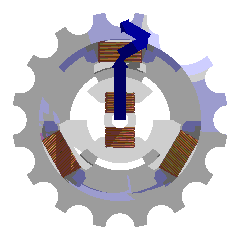In the US, we usually have two 110/115v phases that are 180 degrees out (unlike a thru 3-phase systems where each phase is 120 degrees apart). Any single phase+neutral (which usually == ground for residential) gives you 110/115v. If you take the two hot phases though, since they're 180 out of phase you get 220/230v. Here at the office (datacenter) we have 3ph power available, so combining two of the phases gets you 208v since they're only 120 degrees apart, not 180.
Doubling the voltage means the current (amp) requirement is halved, or rather the available current is doubled - a motor wired for 110v might require 20A, but when wired for 220v only take 10.
It's difficult or impossible to get 3-phase power into most residences, and 3ph switchgear tends to be much more expensive than 1ph.
Doubling the voltage means the current (amp) requirement is halved, or rather the available current is doubled - a motor wired for 110v might require 20A, but when wired for 220v only take 10.
It's difficult or impossible to get 3-phase power into most residences, and 3ph switchgear tends to be much more expensive than 1ph.





